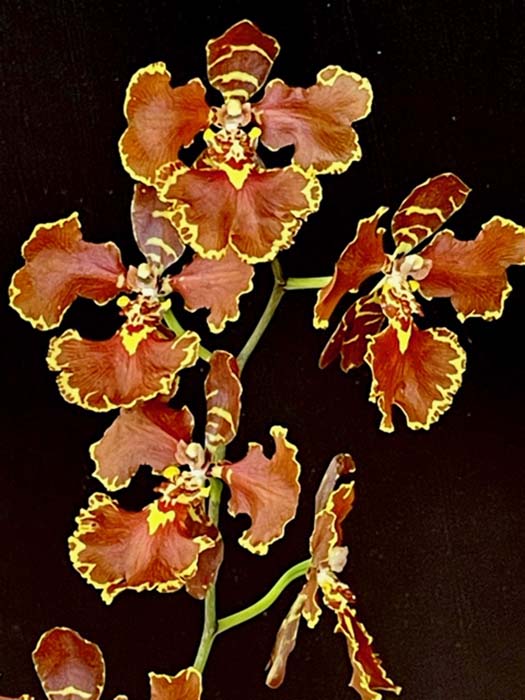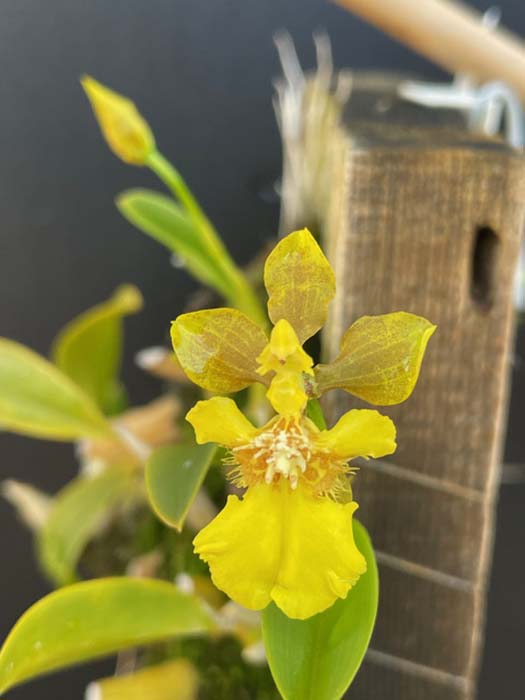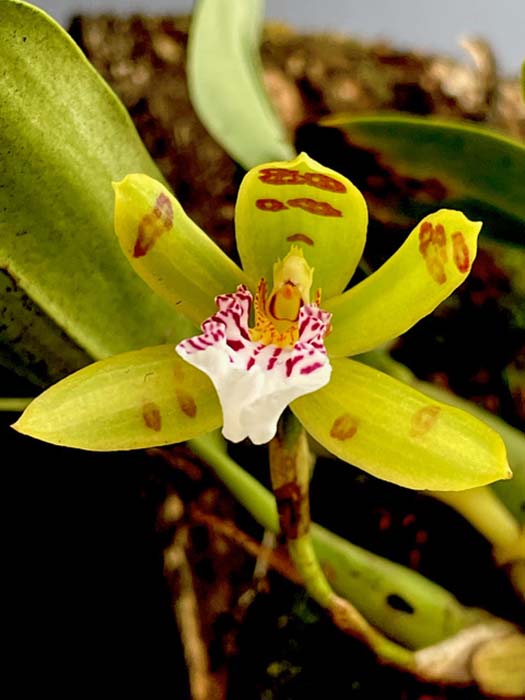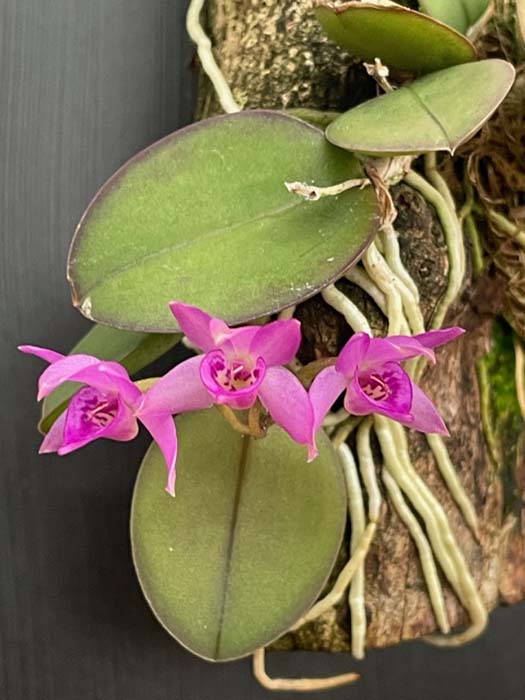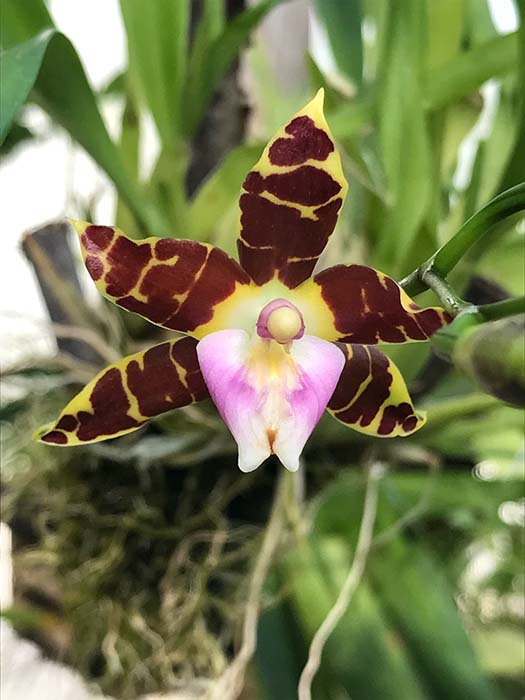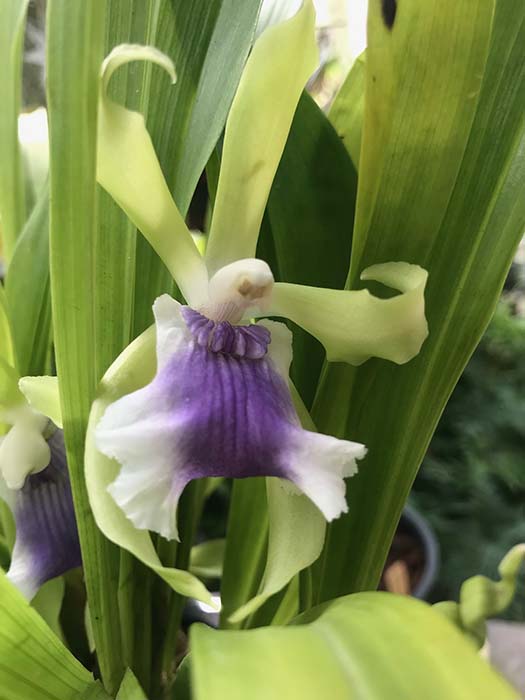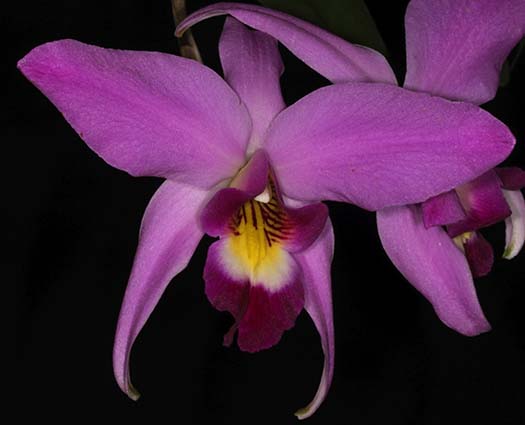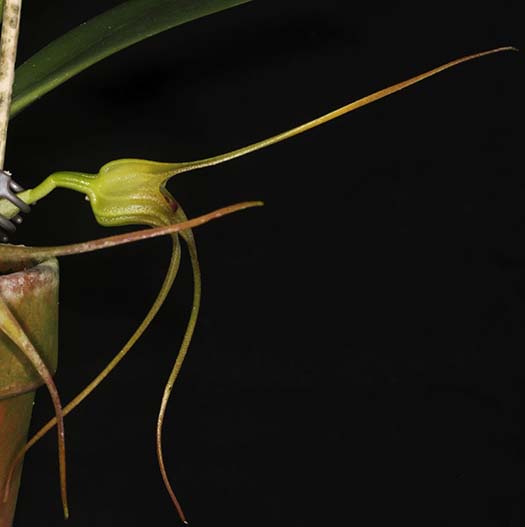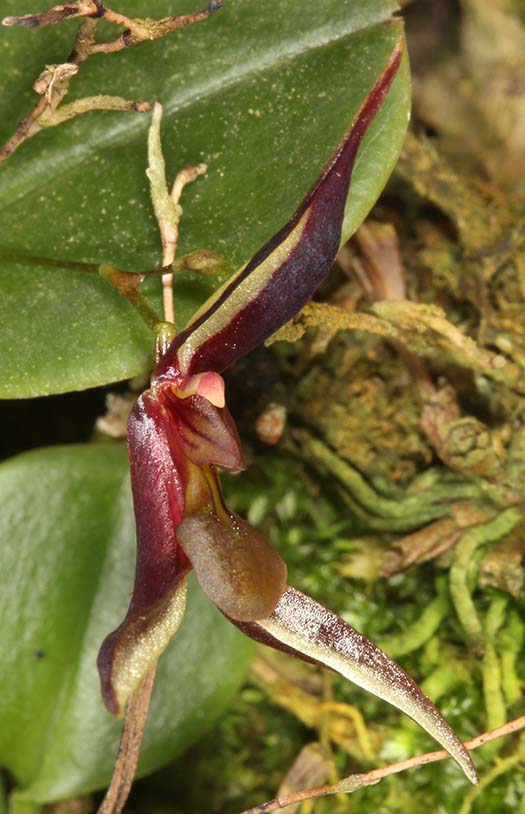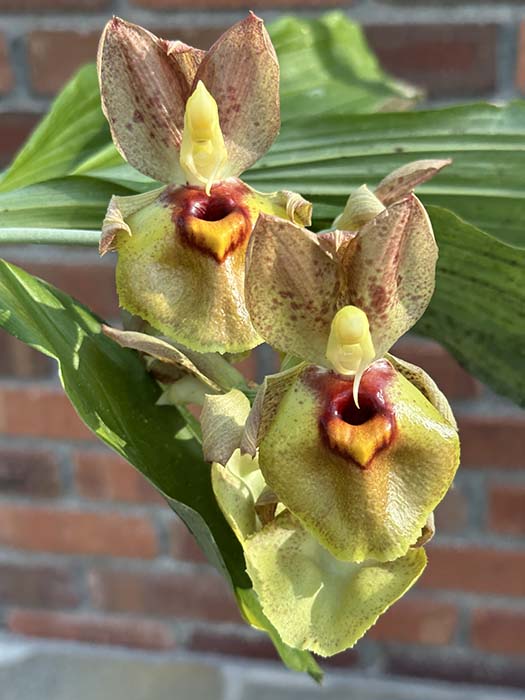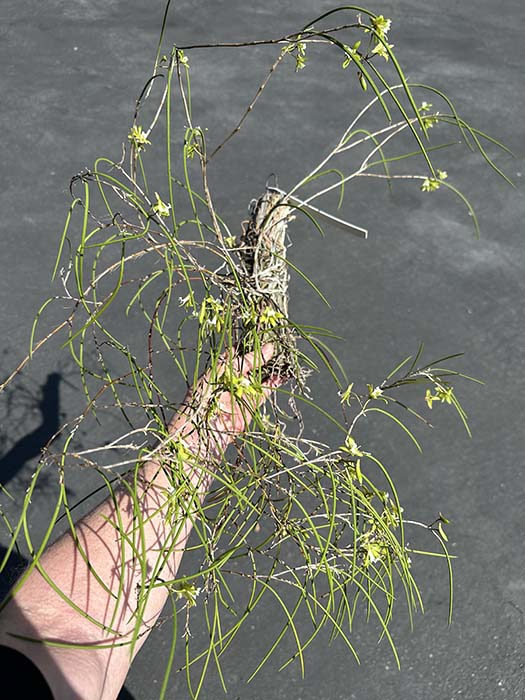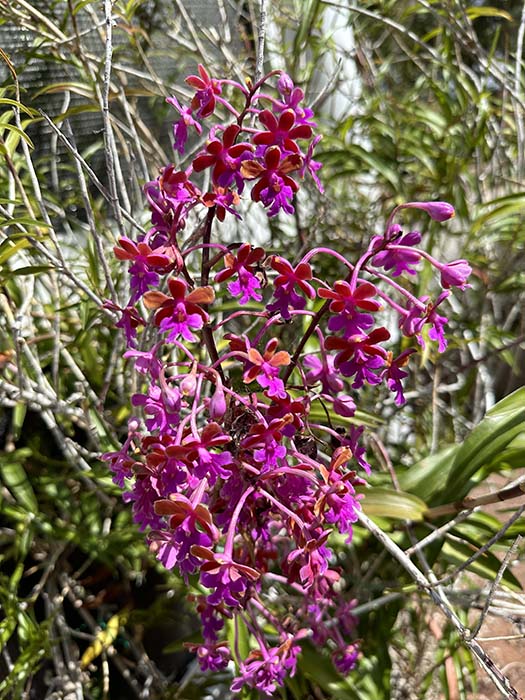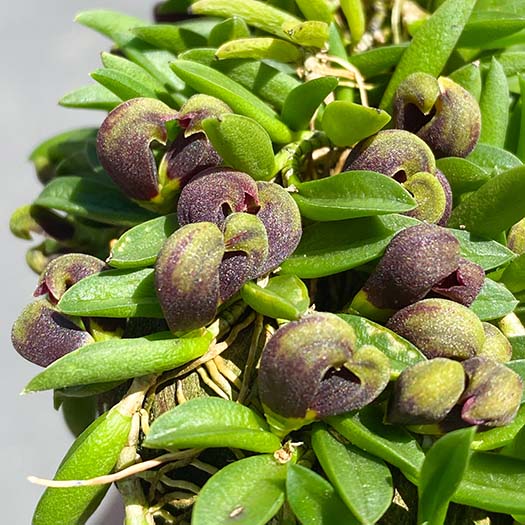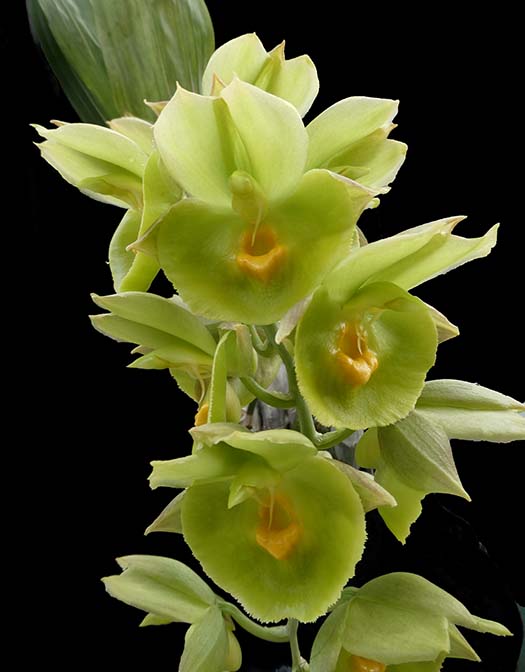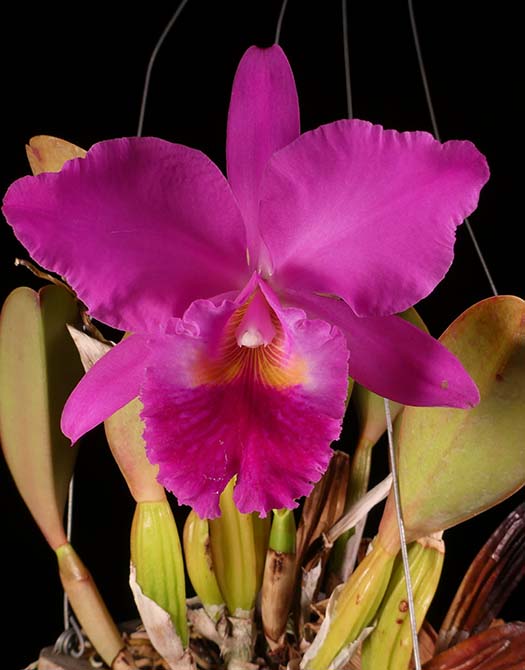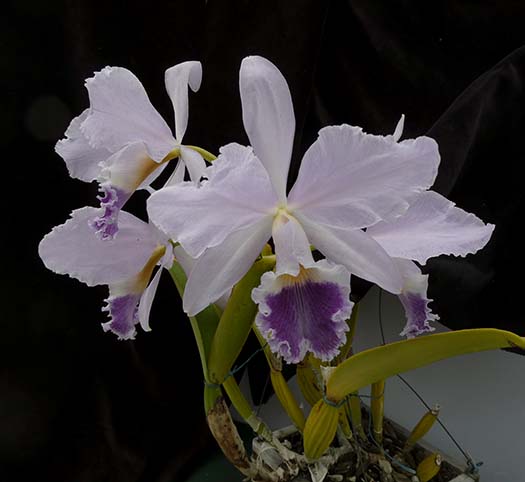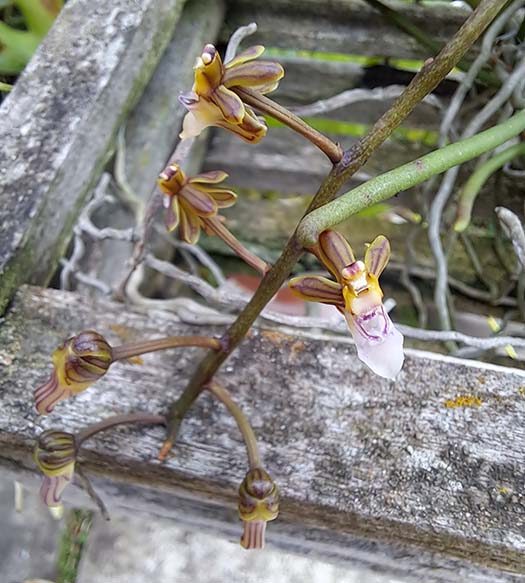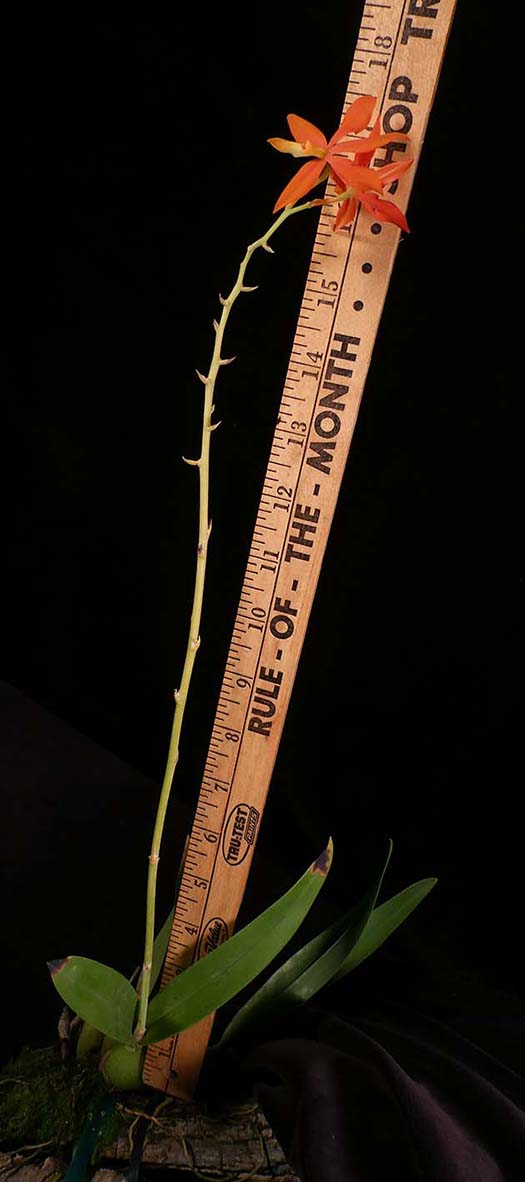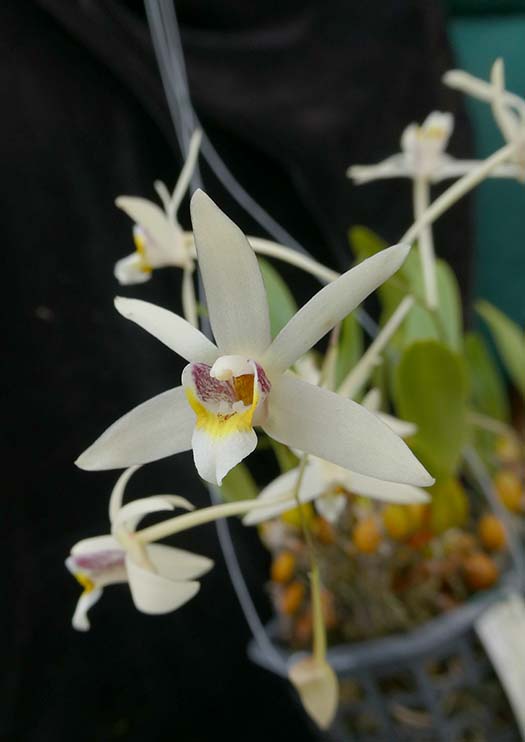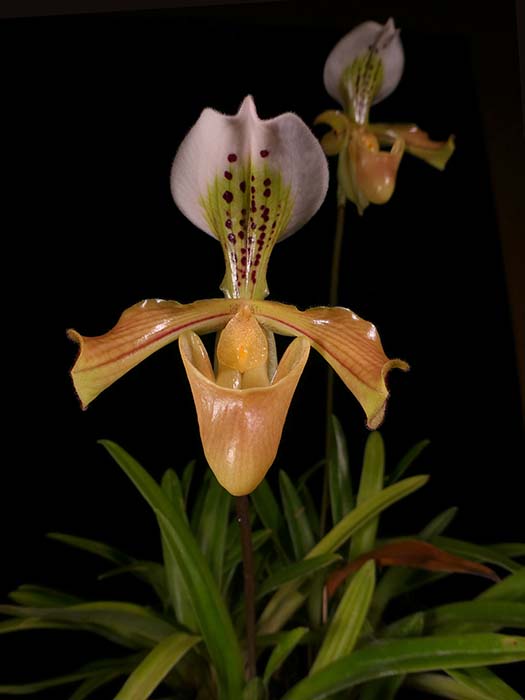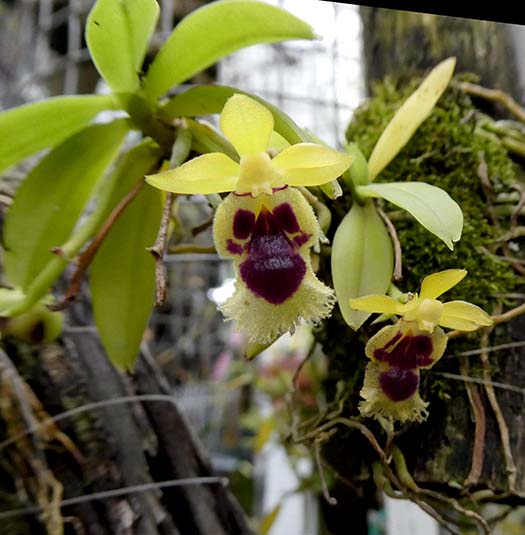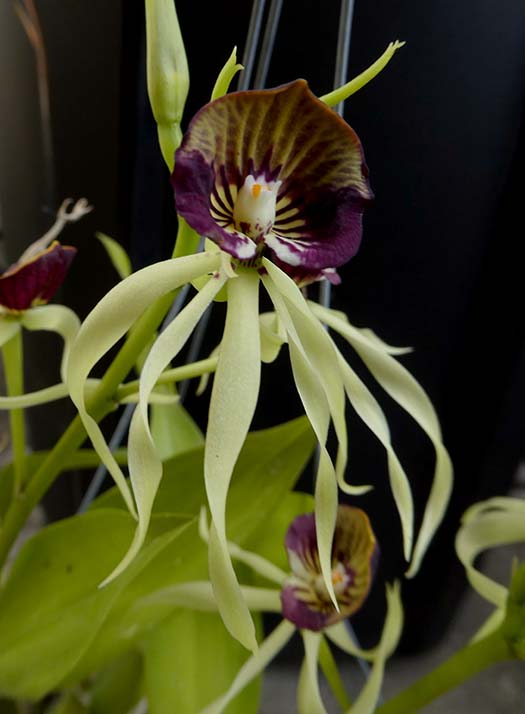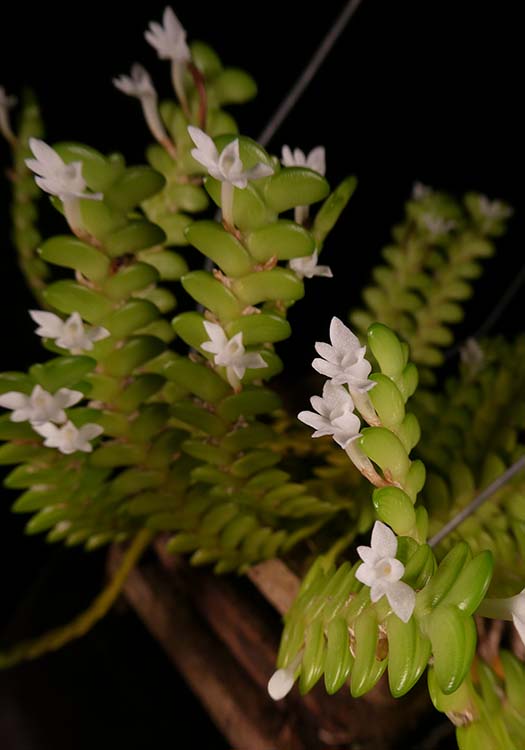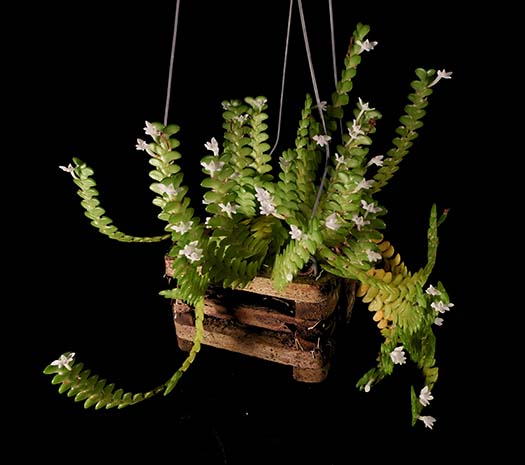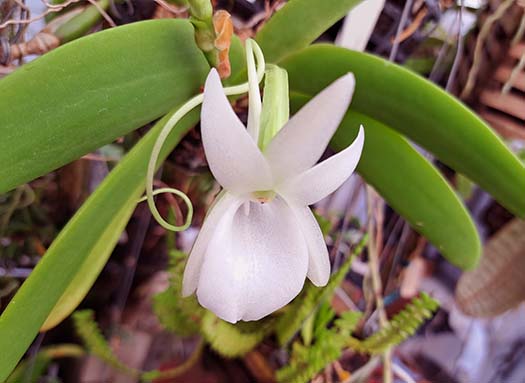November 2022 |
Show and Tell
From Kurt Shanebeck:
|
|
Outdoors coastal, north of Los Angeles: |
|
.
|
|
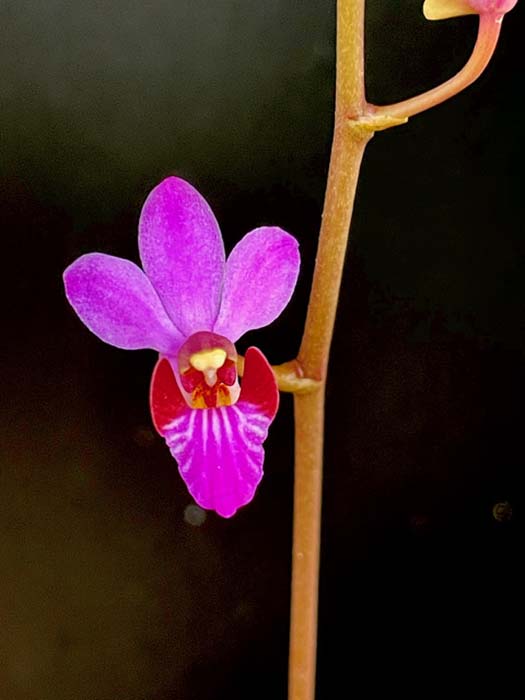
Phalaenopsis pulcherrima v. laoticaNative to Laos. Growing potted in bark with moderate light. |
|
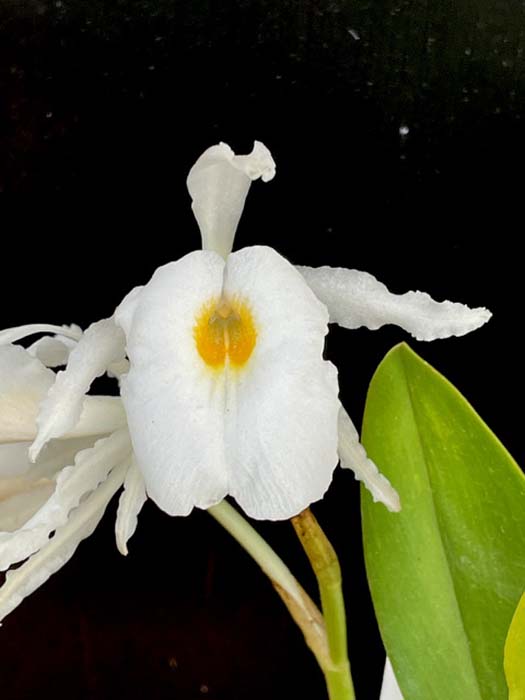 |
Trichopilia fragransGrowing potted in bark somewhat shady. |
From Ed Lyszczek:
|
|
Coastal, California Central Coast |
|
From Chris Ehrler:
|
|
Coastal, California Central Coast |
|
Laelia anceps v. guerrero x 'Irwin'L. anceps grows as a warm to cool growing epiphyte in Mexico and HOnduras at elevations from 500 to 1500 meters. This orchid is grown mounted on a piece of cork oak bark and is grown outside year round. |
|
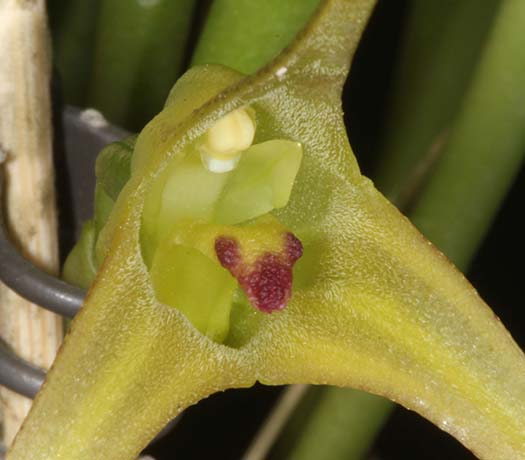 |
|
 |
|
Pleurothallis mystaxA cool to warm growing epiphyte found in Panama at elevations from 650 to 1000 meters. This orchid is growing mounted on a piece of cork oak bark which is hanging in a cool greenhouse. |
|
Pleurothallis segoviensisA hot to cool growing epiphyte found in Mexico, Guatemala, El Salvador, Honduras, Nicaragua, Costa Rica, Panama, Colombia and Ecuador at elevations from 350 to 2300 meters. This orchid is growing on a piece of manzanita with a small amount of sphagnum on the roots. Growing in a cool greenhouse. |
|
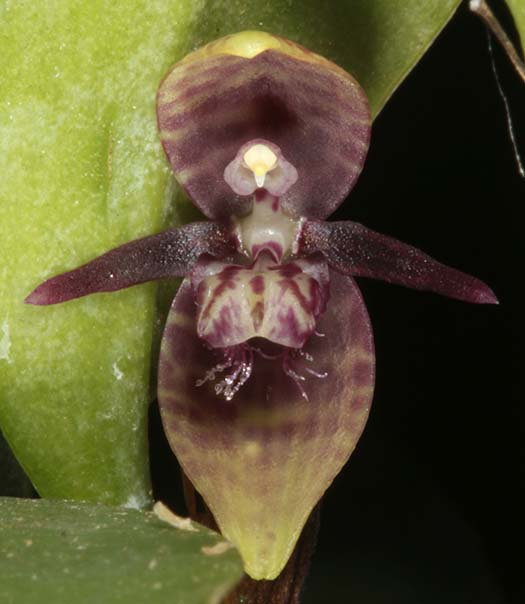
Pleurothallis talpinaria (purple)Found natively at least in Venezuela and Colombia growing as an epiphyte in warm to cool conditions at elevations from 450 to 300 meters. Currently growing in a plastic pot filled with sphagnum moss. Growing in a cool greenhouse. |
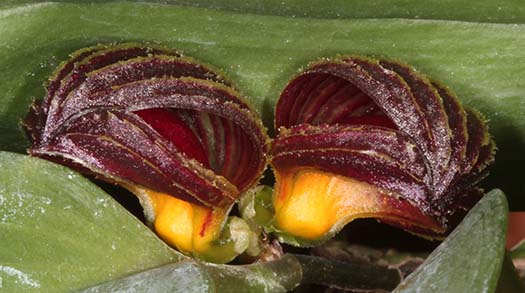
Zootrophion dayanumThis species is found in the Andes of Venezuela, Colombia, Peru and Ecuador growing as an epiphyte at elevations from 1500 to 1900 meters. The flowers are completely open as they only have a 'window' opening for the pollinator to enter. This orchid is growing mounted on a piece of redwood with some sphagnum moss on the root. |
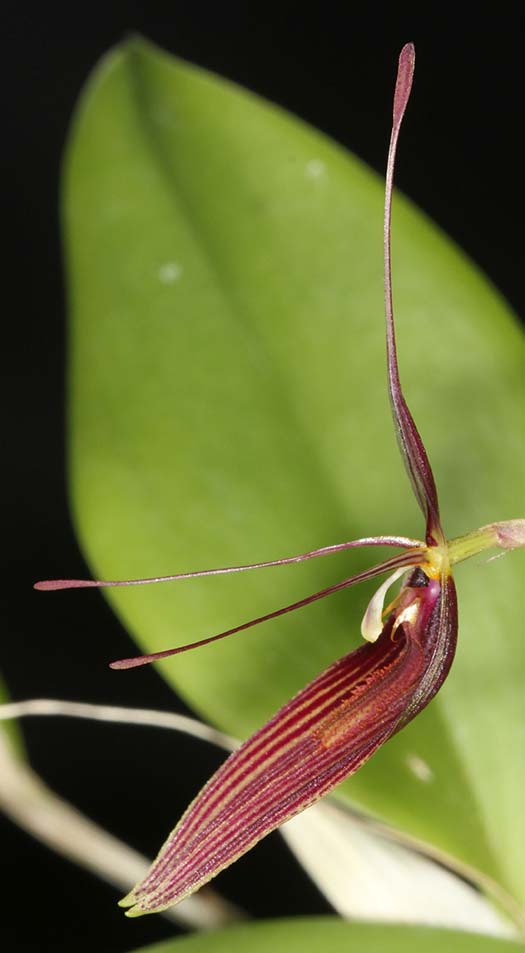
Restrepia brachypus 'Red Stripe'This species is found in the Andes of Venezuela, Colombia, Peru and Ecuador growing as an epiphyte at elevations from 1500 to 1900 meters. The flowers are completely open as they only have a 'window' opening for the pollinator to enter. This orchid is growing mounted on a piece of redwood with some sphagnum moss on the root. |
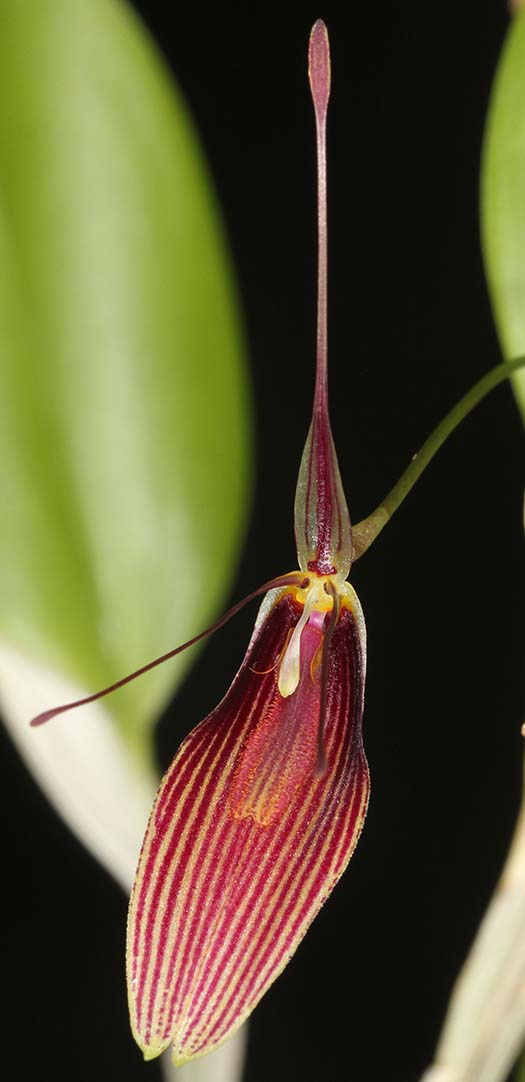 |
From Lynn Wiand:All orchids grown outdoors, coastal southern California |
|
Holcoglossum kimballianum(Thailand / China) light fragrance Actually has 9 flowers now but some were still buds when I took the photo. Mounted. |
|
Sigmatostalix (Gomesa, Ornithophora)
|
|
From Scott McGregor:All orchids grown outdoors, coastal southern California |
|

Catasetum expansumGot male flowers this year (right). Above pic is of female flowers from last year on the same plant. I grow this outdoors on a patio where it gets full sun for a few hours each day—they are tougher than they look!
|
|
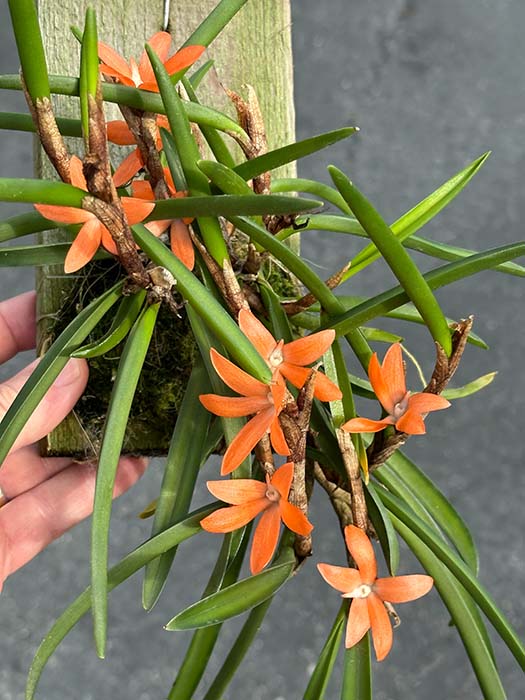
Ceratostylis retisquama (rubra)Last month I got one measly flower, but this month a flush bloom! Supposedly warm grower from the Philippines that seems to do fine outdoors here. |
|

Dockrillia bowmanii (mortii)Easy outdoor grower from Australia with a rambling habit. Small 1” green and white flowers in Autumn. |
|
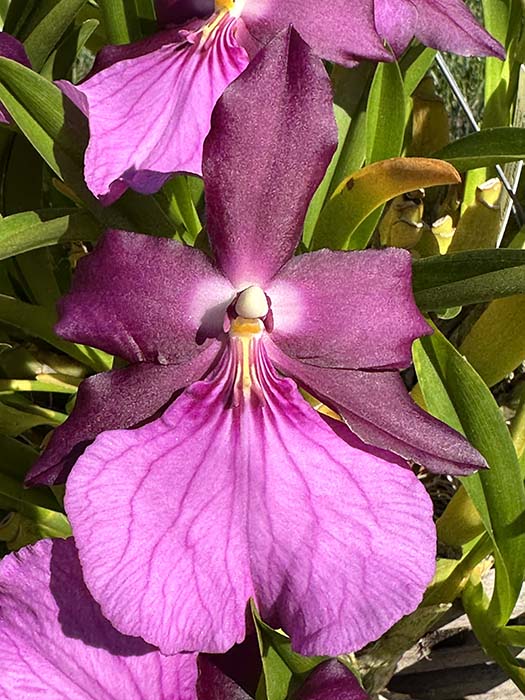
Miltonia morelianaMiltonia moreliana (previously M. spectabilis v. moreliana) is one of the best species to grow outdoors in Southern CA. It quickly grows to specimen size, and produces many 4” deeply colored flowers that last for a month or more. The flowers have a pleasant licorice fragrance. There are various named line-bred clones that emphasize flower size and form, but note the difference in the lip shape on the same plant in the two close-up pics. Grow bright (enough for the leaves to be a light-green color) for best flower production. |
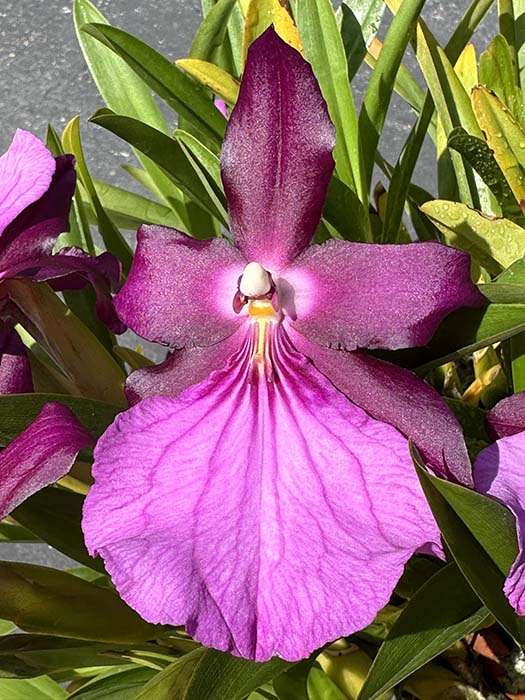 |
 |
|
Oerstedella (Epidendrum) schweinfurthianumGrows outdoors in full sun into a 4’ tall bush, and blooms all summer with shockingly color-saturated flowers. |
|
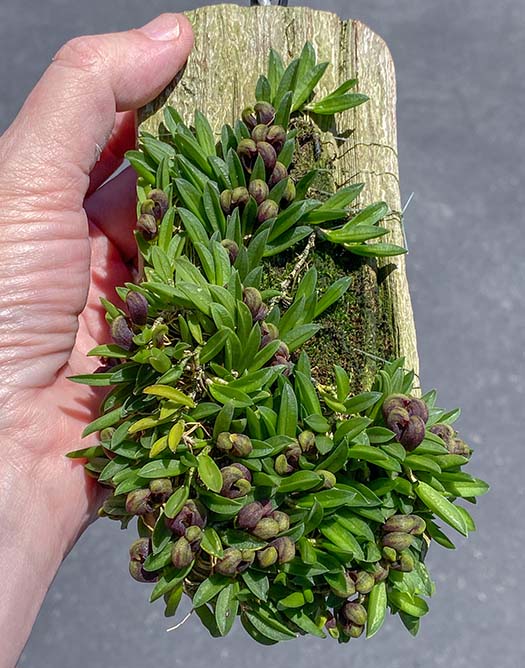 |
|
 |
|
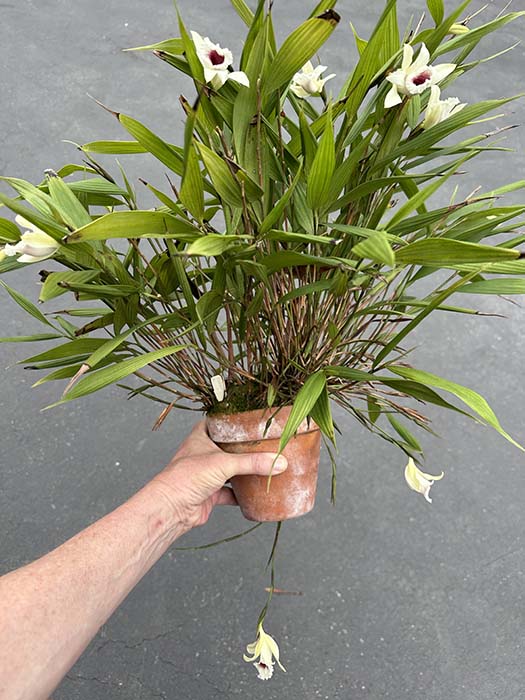 |
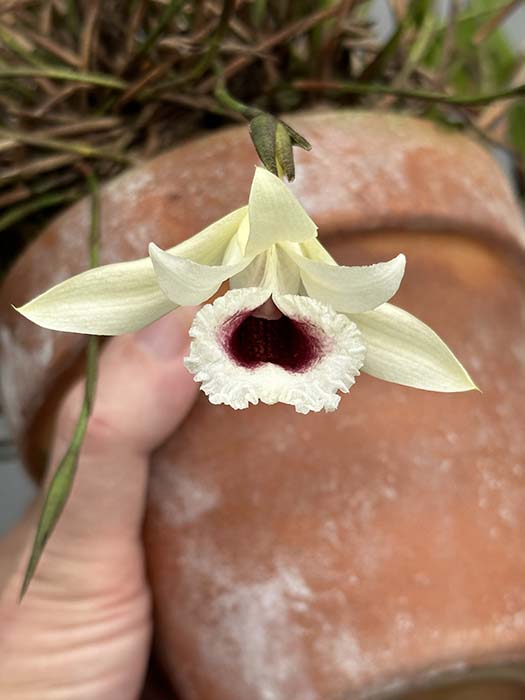 |
Sobralia species (not macra)Unknown Sobralia species originally sold as S. macra. Compact plant only about 18-24” tall has short-lived cream flowers with a deep violet lip, and flowers from both the top of a mature cane as well as from leafless basal spurs. This time it also flowered from the bottom of the pot like a Stanhopea, which makes me think this one prefers to be an epiphyte! Note from Andy Phillips with regard to possible ID: "I still do not have a name on this. Every year I pore through the internet trying to get a name without success to date." |
|
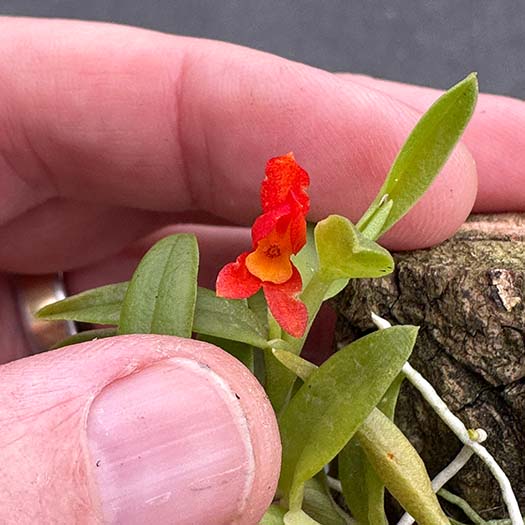 |
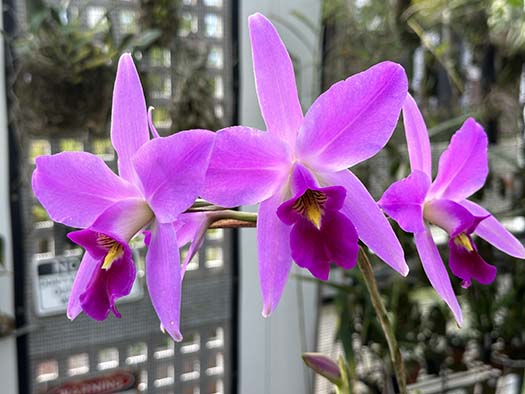
Laelia anceps 'Royal Flush' x 'Deja Vu'My first L. anceps to bloom—line bred for large flower size and form. |
Fernandezia maculataOk, so it is a single tiny (4x8mm) somewhat beat-up flower, but it is brightly colored, and it is a Fernandezia! These are mostly grown by masochists who also like killing Dendrobium cutherbertsonii. I got this as a near blooming size seedling a couple years ago and the plant actually seems really happy and this is its first flower. Maybe next year it will be more photo-worthy! I grow it mounted directly on cork with no moss, in bright light but in a cooler spot in the outdoor shade house, and watered often. |
|
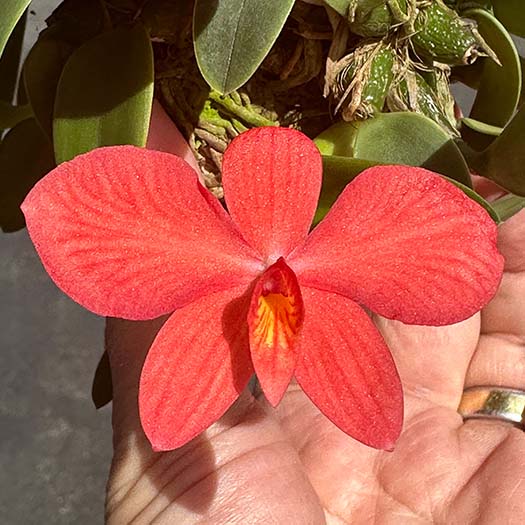
Sophronitis (Cattleya) brevipedunculataLost some buds due to a heat wave on this usually spectacular specimen, but still got about half. I grow my Sophronitis species bright and mounted on cork branches without any moss, so the roots can ramble.
|
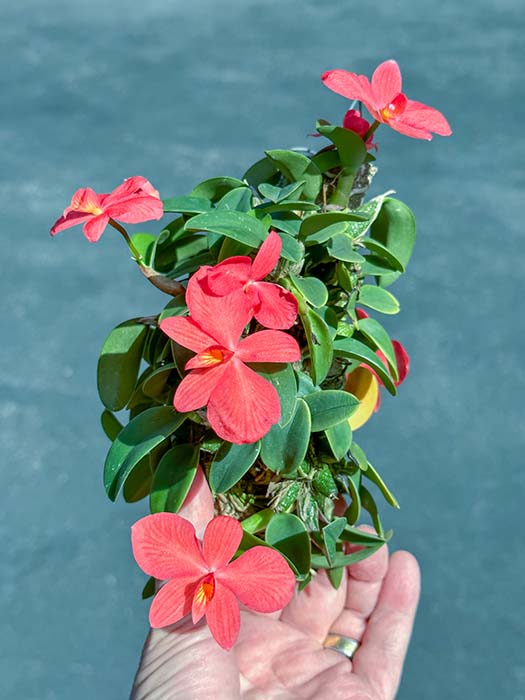 |

Maxillaria dilloniiA large plant of this species will almost always be in bloom. I’m not a “Maxillaria whisperer” like Roberta and so only keep a few species. I especially like this one because it stays compact, has large 3-4” flowers, and blooms often. |
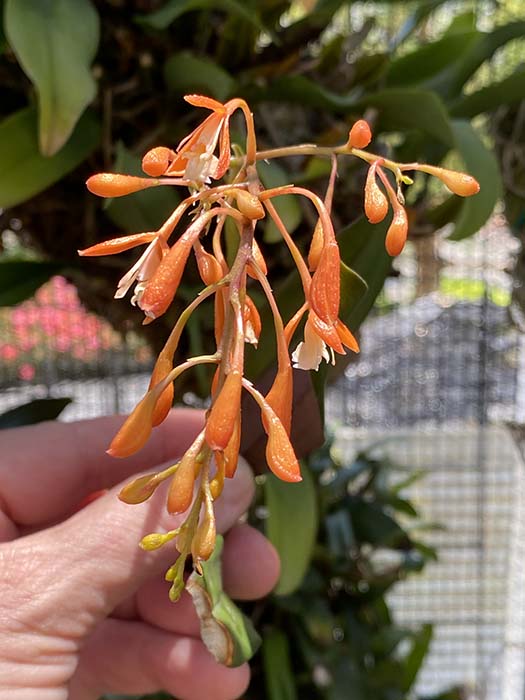
Epidendrum embreeiSmall but brightly colored, this species usually flush blooms on multiple mature canes but this year just did one at a time. Buds just beginning to open in this pic. |
From Roberta Fox:
|
|
Outside in the Back Yard: |
|

Brassavola perriniiI moved this out of the greenhouse about a year ago, and it has done fine outside. Brazil S, Paraguay, Bolivia. |
|

Barkeria scandensObtained as a keiki, stil fairly small but growing vigorously on its mount. Color is more intense than that of its Bark. lindleyana cousin. Mexico S and C |
|
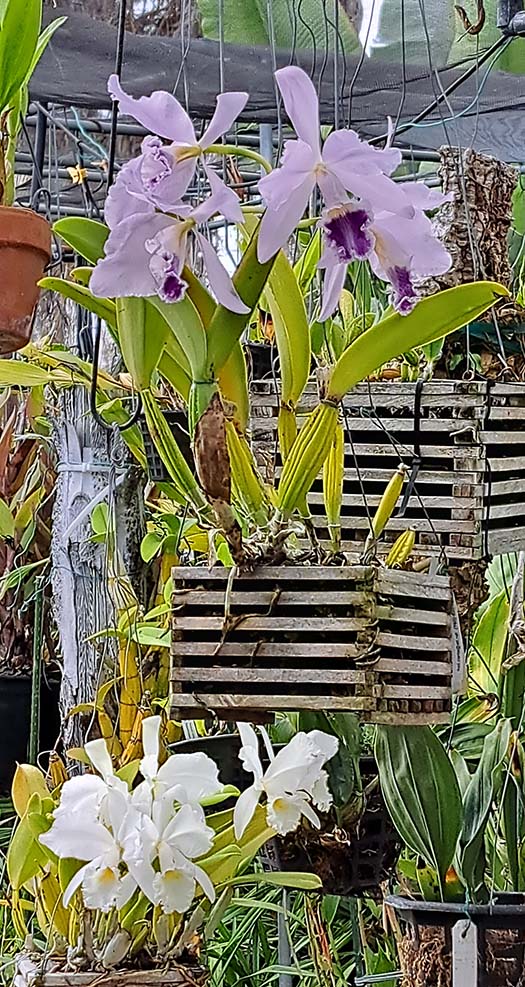 |
|

Ceratostylis retisquama (rubra)From the Philipines, supposdly below 500 m. It has a reputation of being a warm-grower. But mine grows quite well on my patio. It pops out the occasional flower at various times, but also produces a nice flush bloom several times a year. Buds hide in the leaf axils, and seem to suddenly appear. |
 |
Cleisostoma simondiiCute little Vandaceous species with lots of terete leaves about 3 inches long. The flowers are easy to miss because colors are muted and only about 3/4 inch, but the plant has another spike that will bloom when this one is fading. It grows in a wood basket (think 3-dimensional mount) with no medium. When mounted it just goes off in all directions. Native to a wide area of east Himalaya, China-Hainan, and much of southeast Asia. |
|

Dracula cordobaeThis plant opened a few flowers during the heat, then promptly shut them. As soon as the nights cooled off, it has gone crazy from multiple spikes that were just waiting for the right time. It difficult to photograph, since one needs to get under it. Using the front (selfie) camera on a phone seems to help. Each spike can bloom multiple times. |
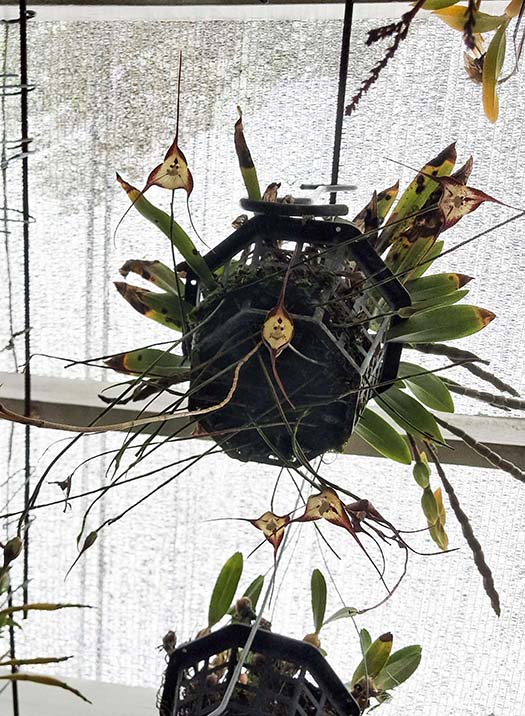 |
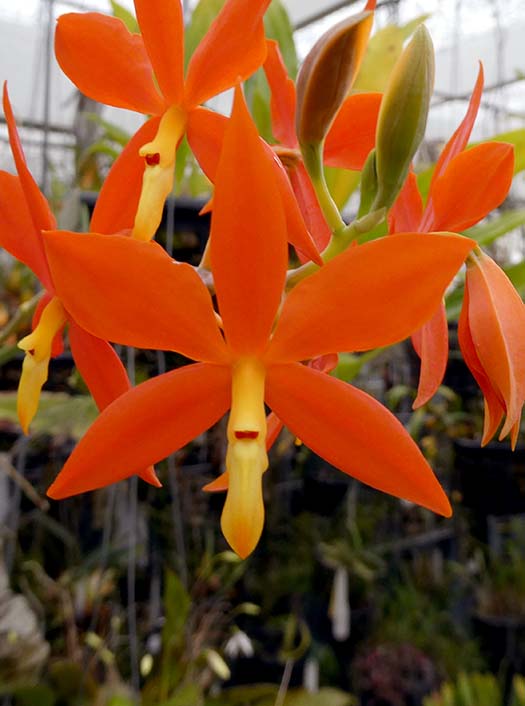 Prosthechea (Encyclia) vitellinaAbove is photo from July (blooming at the end of June). To the right is the same spike, still going, having produced (and dropped) multiple flowers. The spike, in mid October, is now about 17 inches long, and still going (though probably not for too much longer). What a show! |
|
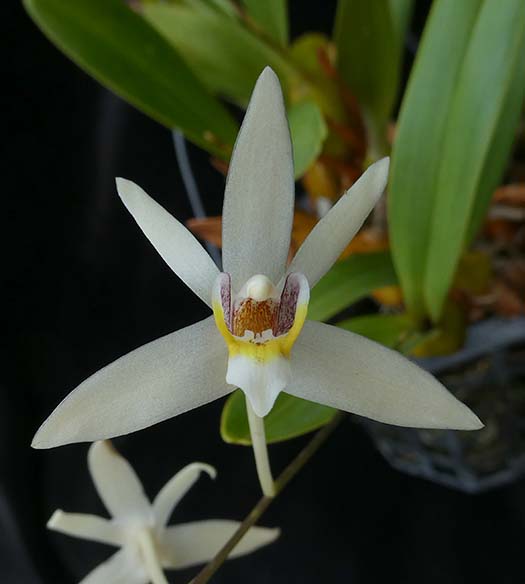
Dendrobium (Epigeneium) triflorum var. orientaleFrom Java. It blooms 2 or 3 times a year with cream-white flowers. I have found that Epigeneiums tend to grow and bloom best once they have escaped from their basket or mount. |
|
 Gomesa colorata (Oncidium coloratum)Miniature Oncidum relative with flowers as big as the plant and intriguing patterns. Native to southern Brazil. Grows shady and damp. |
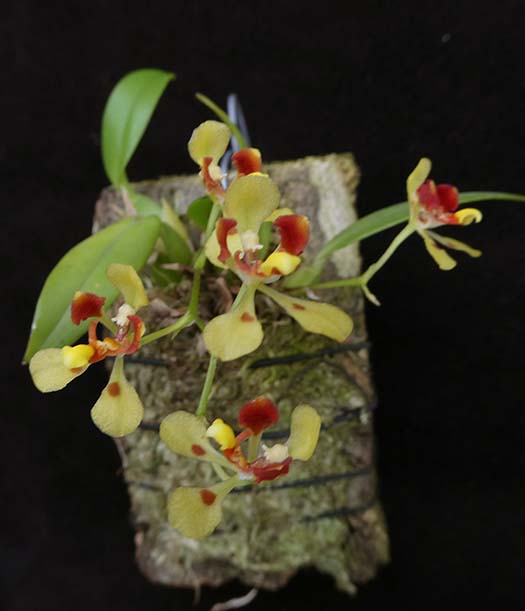 |
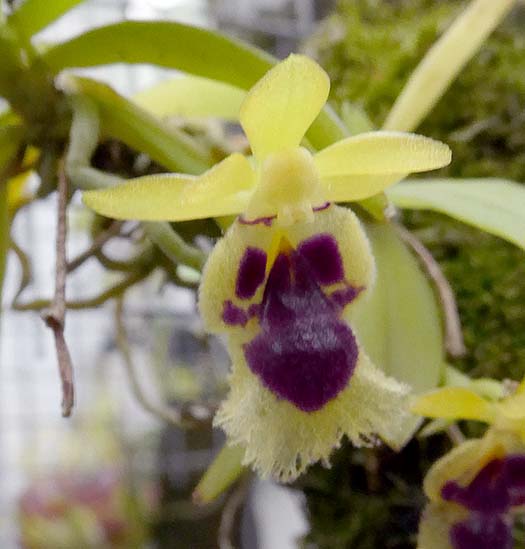 |
|
Haraella retrocallaAnother miniature, this in the Vandaceous family. An inflorescence can produce 2 or 3 flowers sequentially. Their fragrance is bigger than their size. They have been reclassified as Gastrochilus, probably in an attempt to avoid monotypic genera. Native to Taiwan. Looks very delicate, but actually a tough little plant that tolerates both winter cold and summer heat, blooms several times a year. |
|
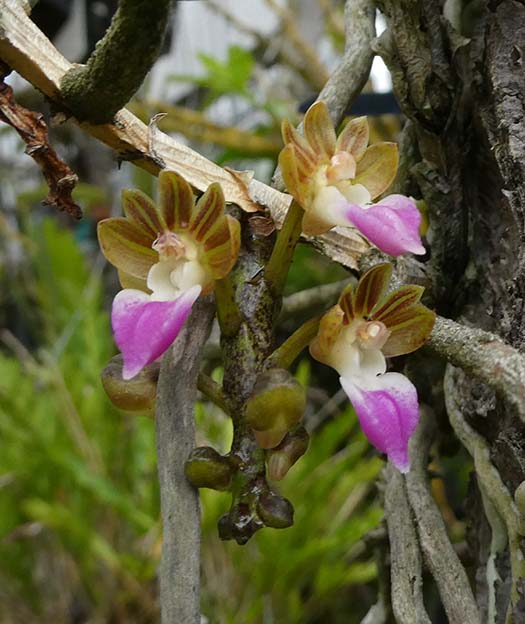 |
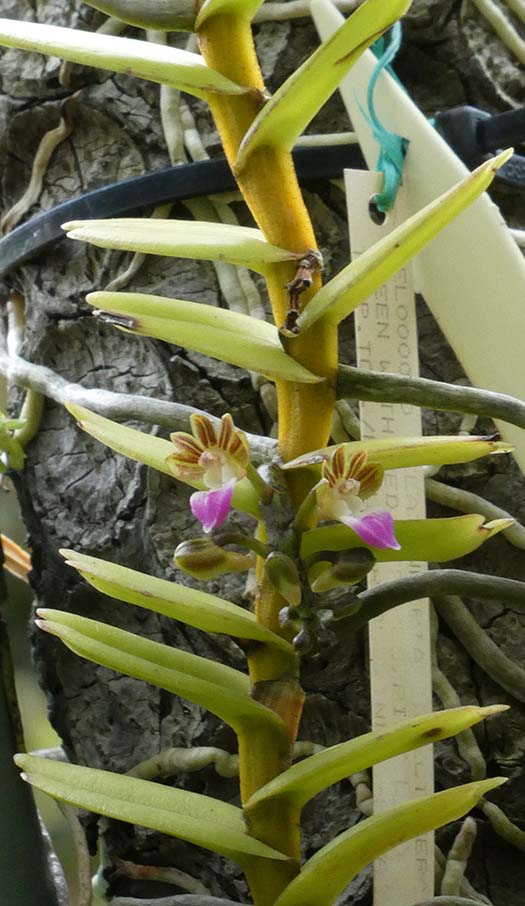
Pelatantheria insectiferaNative to a wide area of east Himalaya, northern India, and southeast Asia. It has a rambling habit, and produces clusters of half-inch flowers at multiple nodes on the stem. |
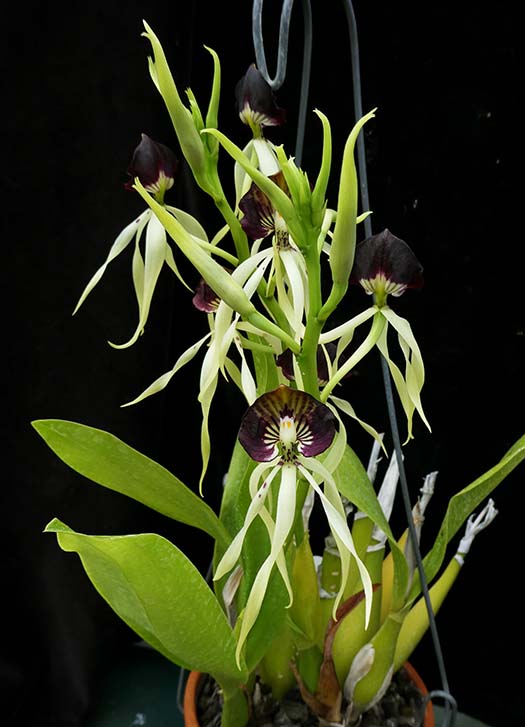 |
|
Prosthechea cochleataThe "cockle shell" or "octopus" orchid. It produces flowers sequentially for many months. By March the spike may be 2 feet long or more, with new flowers produced at the growing tip. |
|
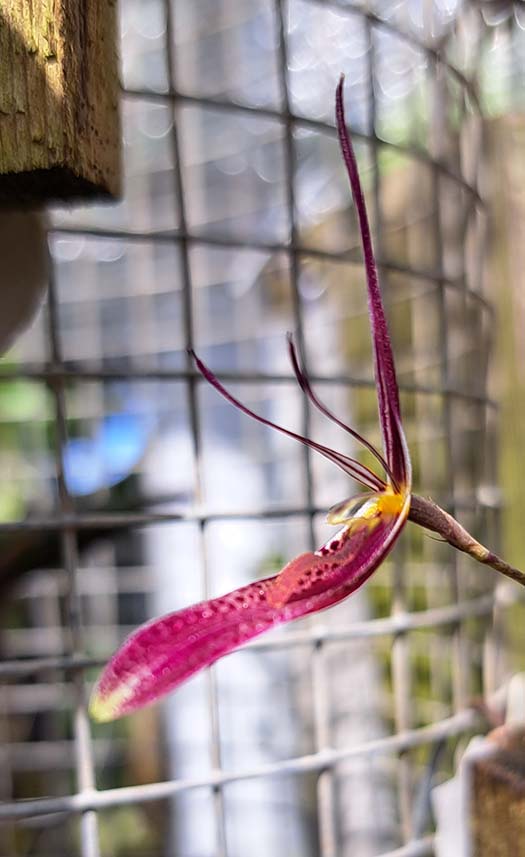 |
|
Restrepia condorensisBlooms on and off all year, where most of my other restrepias are more seasonal. |
|

Scaphosepalum swertifolum ssp. exiguumProduces a multude of small but intricate flowers, several times a year. It produces flowers sequentially on the inflorescences for many months. |
 |
 |
|

Scaphyglottis minutifloraThis lives up to its name. It makes up for the diminutive flower size by producing lots of them.(Index finger for size) Since the color is not dramatic, it's easy to miss the bloom, a lesson to look at one's plants often. |
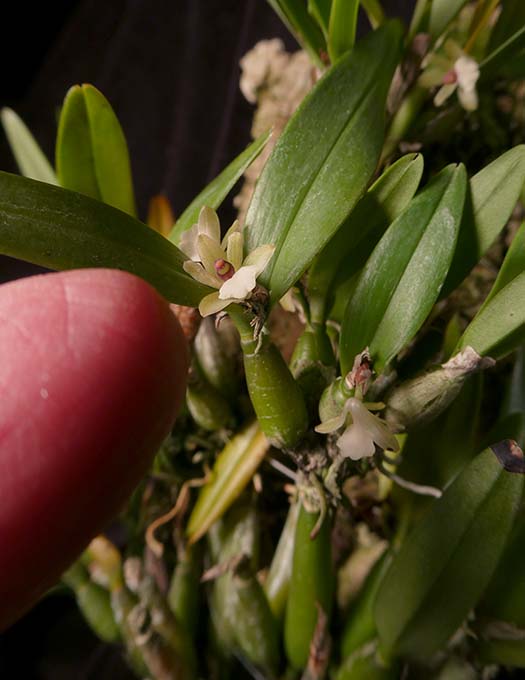 |
In the greenhouse... |
|
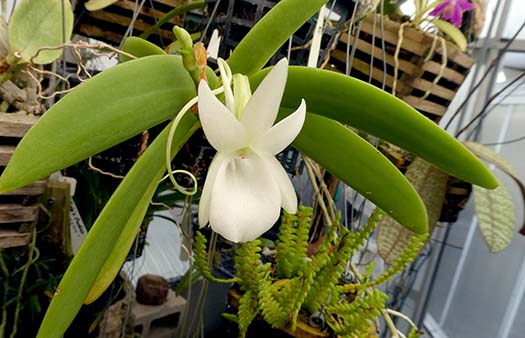 Angraecum leonisFrom northern Madagascar and the Comoros. There are, according to Charles Baker, two forms, with the Comoros form being larger and from somewhat higher elevation. No way of knowing which this is, grows well in the greenhouse so I'm not going to chance growing it outside. |
|
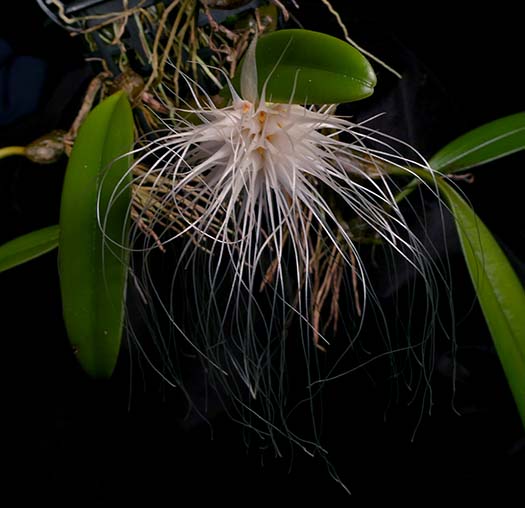
Bulbophyllum medusaeThe fascinating wispy "whiskers" are the sepals, from a multitude of individual flowers. It is native to a wide area of lowland southeast Asia including Mayasia, Indonesia, and Thailand. |
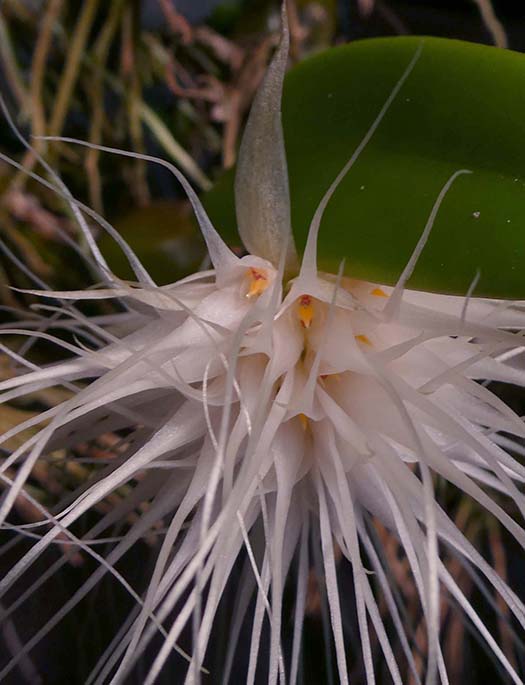 |
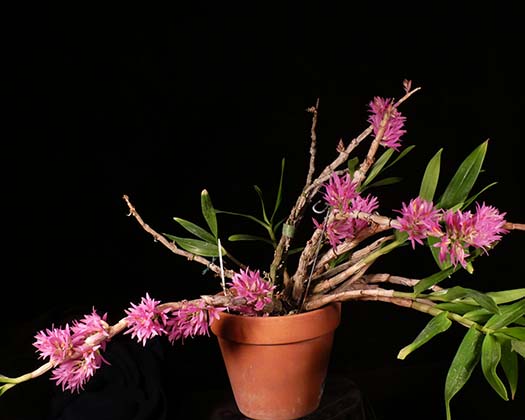
Dendrobium bracteosumLabeled "Den. bracteosum x Den. tanii" but Den. tanii is not a separate species, just a somewhat smaller variety of Den. bracteosum. This plant is a non-stop bloomer. The flowers last for several months, and as they start to fade, a new batch is emerging. It blooms on both leafed and leafless canes, repeadedly. I bring it into the house to enjoy it, but after a couple of months give it some greenhouse time to get more light, otherwise the new flowers tend to be pale. |
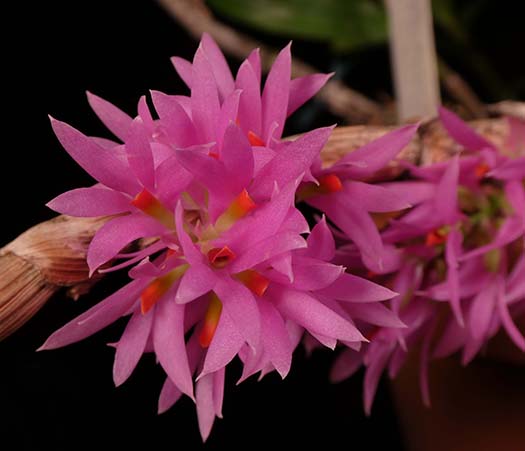 |

Phalaenopsis (Doritis) pulcherrimaNative to a wide area of southeast Asia. Segments tend to be very reflexed, though there are some linebred cultivars that are flat and round. While mostly from low elevations, there are some populations up to 1300 m, so could grow cooler, as Kurt's experience indicates.. |
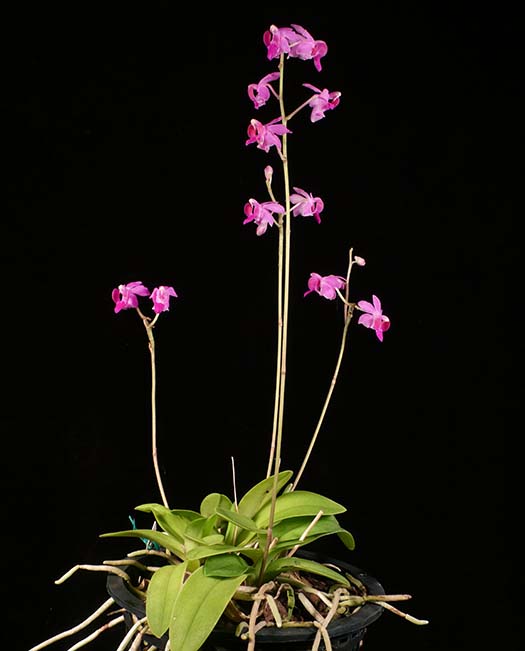 |

Dendrobium smilliaeNative to New Guniea and Austrialia-Queensland. It blooms on prior year's bare canes. It may bloom more than one year on an old cane. |
 |
